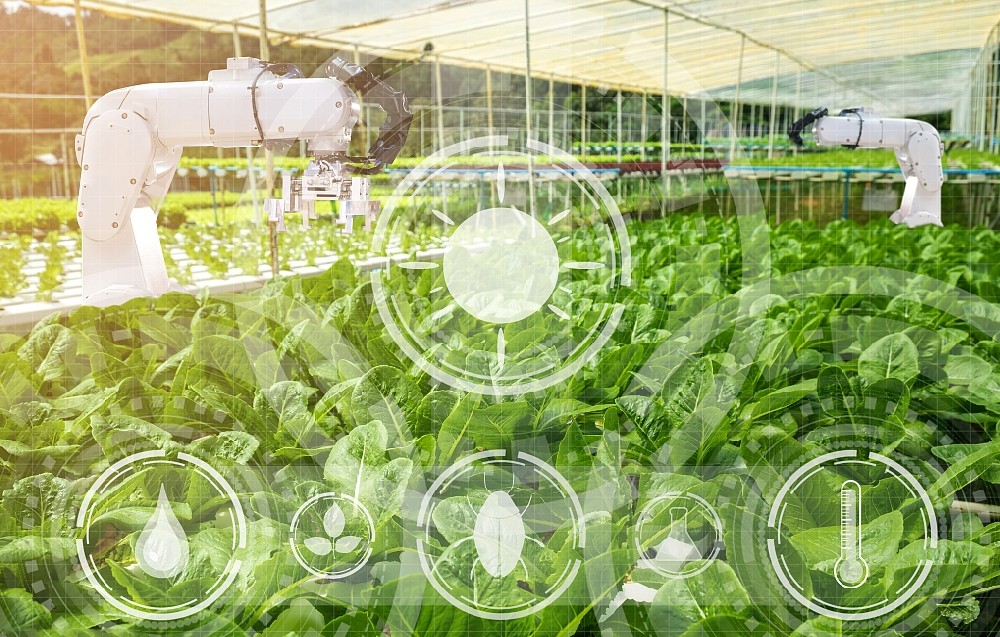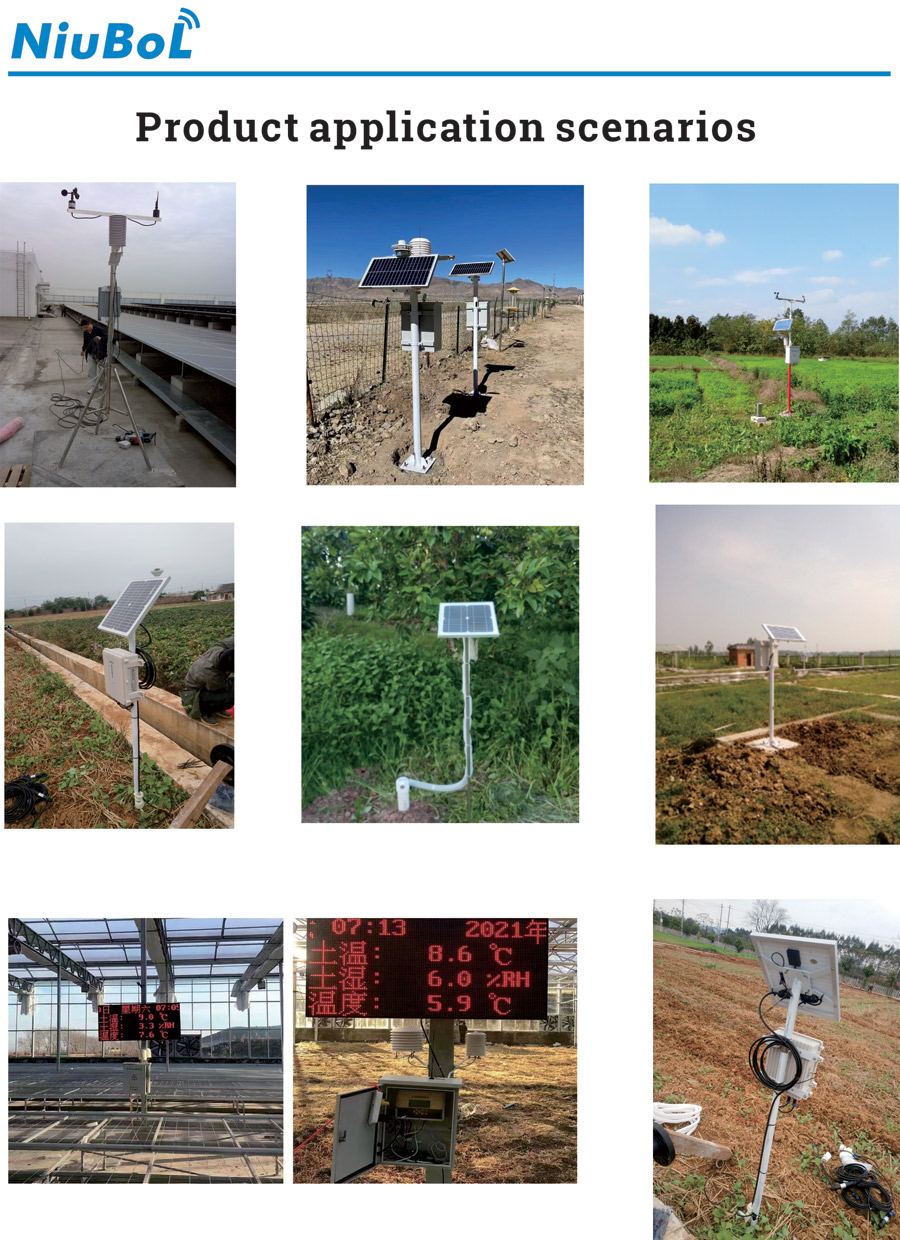

— Blogs —
—Products—
 Consumer hotline +8618073152920
Consumer hotline +8618073152920 WhatsApp:+8615367865107
Address:Room 102, District D, Houhu Industrial Park, Yuelu District, Changsha City, Hunan Province, China
Product knowledge
Time:2023-11-26 20:13:36 Popularity:1254
In the field of agriculture, agricultural weather stations can monitor the following meteorological parameters:

Temperature: including air temperature, soil temperature, etc.
Humidity: including air humidity, soil humidity, etc.
Light intensity: affects the photosynthesis and growth of plants.
Wind speed and direction: affects the pollination of crops and the spread of pests and diseases.
Barometric pressure: can help predict weather changes.
Rainfall: important for irrigation and drainage of farmland.
Evapotranspiration: reflects the moisture status of farmland.
Radiation, solar spectrum: important for agricultural research and production.
Other parameters, such as cloudiness and haze, are also valuable for agricultural meteorological services and scientific research.
The monitoring of these meteorological parameters is of great significance in guiding agricultural production, and can help farmers to understand the weather changes and crop growth environment, so that they can take corresponding measures to improve the efficiency of agricultural production.
In the field of agriculture, the practical application scenarios of agricultural automatic weather stations include:
Monitoring soil moisture: through automatic weather stations, parameters such as humidity, temperature and nutrients in the soil can be monitored to help farmers understand the soil condition and provide a good growing environment for crops.
Predicting weather conditions: automatic weather stations can monitor meteorological parameters such as wind direction, wind speed, rainfall, etc., helping farmers to predict weather conditions so that they can take proper countermeasures, such as covering crops and draining water, to avoid the impact of rainwater on crops.
Improve the efficiency of water resources utilisation: By monitoring rainfall and soil moisture through automatic weather stations, the amount of irrigation water can be precisely controlled to improve the efficiency of water resources utilisation.
Guiding agricultural production: Based on the meteorological data and soil parameters monitored by automatic weather stations, farmers can be guided to carry out reasonable sowing, fertilising, spraying and other agricultural production activities.
Assessing agricultural risks: automatic weather stations can monitor extreme weather, natural disasters and other risk factors, helping farmers take timely countermeasures to reduce losses.
Promote the development of precision agriculture: automatic weather stations provide accurate weather and soil data, which provides important support for the development of precision agriculture and helps to improve the yield and quality of crops.

In the field of agriculture, agricultural weather stations can monitor the following farming activities:
Sowing time: automatic weather stations can monitor soil temperature, humidity and other parameters to help farmers determine the best time for sowing.
Fertiliser application: Based on meteorological data and soil parameters, the optimal time and type of fertiliser application can be determined to improve the efficiency of fertiliser utilisation.
Irrigation: By monitoring soil moisture, rainfall and other parameters, it is possible to accurately control the amount and timing of irrigation water, avoiding the effects of too much or too little water on crops.
Spraying: Based on meteorological data and pest conditions, the best time and type of spraying can be determined, reducing the amount and cost of pesticide use.
Weeding: By monitoring the growth of weeds and meteorological data, the best time and method of weeding can be determined, improving the effectiveness and efficiency of weeding.
Harvesting: According to the growth of crops and meteorological data, the best harvesting time and method can be determined, improving the quality and efficiency of harvesting.
To sum up, the application scenarios of agricultural weather stations in the field of agriculture are very wide, agricultural weather stations can monitor a variety of agricultural activities in the field of agriculture, help farmers better understand the crop growth environment and weather changes, improve agricultural production efficiency and reduce production costs, and increase farmers' income.
Related recommendations
Sensors & Weather Stations Catalog
Agriculture Sensors and Weather Stations Catalog-NiuBoL.pdf
Weather Stations Catalog-NiuBoL.pdf
Related products
 Combined air temperature and relative humidity sensor
Combined air temperature and relative humidity sensor Soil Moisture Temperature sensor for irrigation
Soil Moisture Temperature sensor for irrigation Soil pH sensor RS485 soil Testing instrument soil ph meter for agriculture
Soil pH sensor RS485 soil Testing instrument soil ph meter for agriculture Wind Speed sensor Output Modbus/RS485/Analog/0-5V/4-20mA
Wind Speed sensor Output Modbus/RS485/Analog/0-5V/4-20mA Tipping bucket rain gauge for weather monitoring auto rainfall sensor RS485/Outdoor/stainless steel
Tipping bucket rain gauge for weather monitoring auto rainfall sensor RS485/Outdoor/stainless steel Pyranometer Solar Radiation Sensor 4-20mA/RS485
Pyranometer Solar Radiation Sensor 4-20mA/RS485
Screenshot, WhatsApp to identify the QR code
WhatsApp number:+8615367865107
(Click on WhatsApp to copy and add friends)
